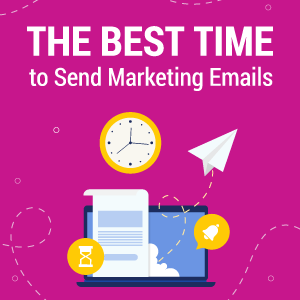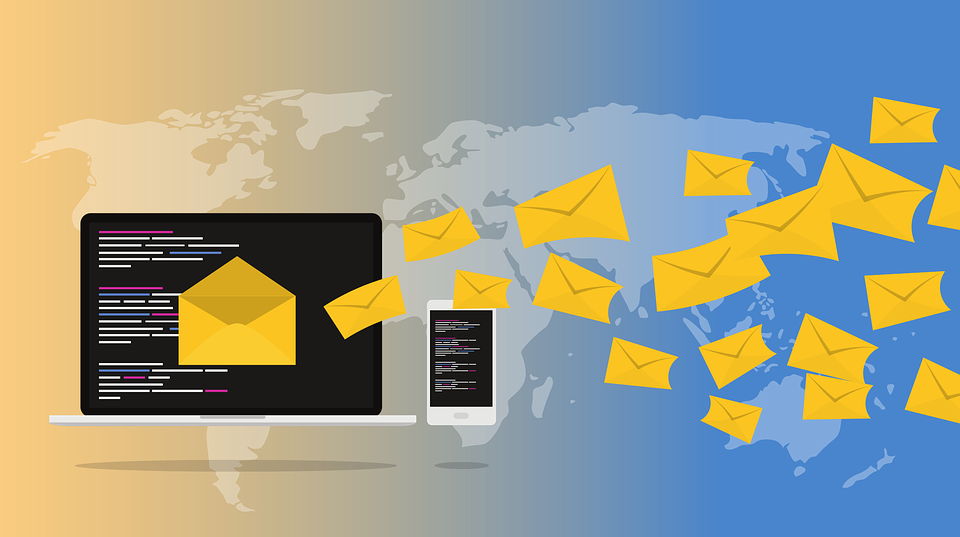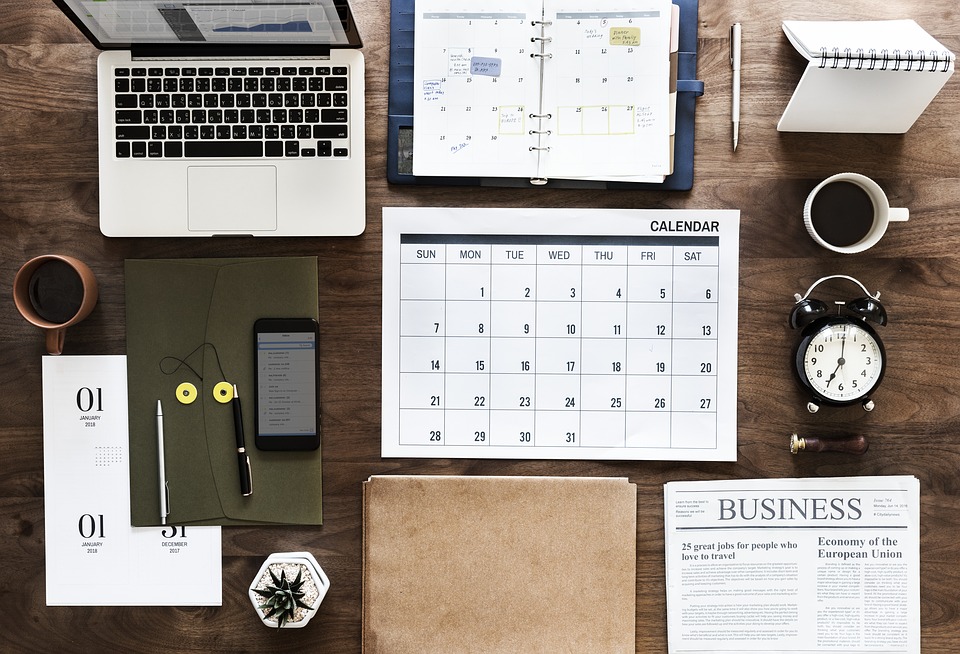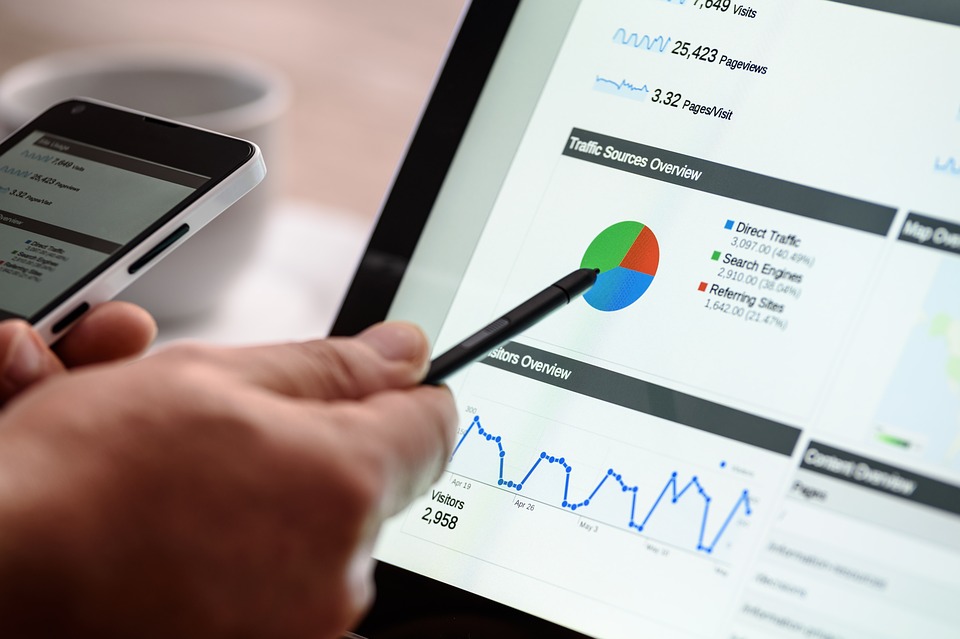
How do you get your company’s emails to stand out in a crowded inbox? Knowing the best time to send a marketing email is one factor that can make a big difference in your open rates.
There’s no single approach that works perfectly for every email marketing campaign. However, some research-backed best practices can help you boost your open and read rates.
The time you send your emails can have a huge impact on whether or not your subscribers actually read them. Sending them at the right time is more important than you might think.
It’s time to fine-tune your email schedule to get the best possible results.
Originally published on October, 19th, 2019, this article was updated and republished on June 3rd, 2024.
The Best Time to Send an Email

Is there a solid answer to the question, “When is the best time to send a marketing email?”
Yes and no. Studies support specific timing strategies, which are a great place to start.
Best Time of Day to Send Emails
Sending your emails on weekdays between 6 am and 3 pm ensures you’ll catch people during their most active emailing window.

Best Day of the Week to Send an Email
Within that window, Hubspot’s research shows that Mondays are less successful, with the best results on Tuesdays and Thursdays.
This makes sense. Your customers already have overloaded inboxes from everything they received over the weekend. Your email will probably fly under their radar.
Emails don’t usually perform well on Fridays, either. By this point, people are distracted and eager for the weekend. Most likely, they won’t pay attention to marketing emails.

Create an Email Schedule That Fits Your Audience
The tips and results above are based on general, economy-wide research. The simple fact is that no one timing rule works well for every business.
That’s why taking a nuanced approach is crucial instead of a general one. To do that, one of the best business hacks you can learn is email segmentation. This divides your email recipients into several cohorts based on location, demographics, interests, and more.
Think of it this way. 3 pm on a Tuesday in New York is 8 pm in London. If you don’t segment your email list by location, you’ll immediately negate some of the impact.
But location-based segmentation is just the beginning. Your customers and prospects will also be interested in different products and services, either new to your service or loyal customers, and have different reasons for purchasing.
To maximize the chance of email success, you’ll need to personalize your emails based on these factors. That way, you’ll ensure your marketing communications land with the right person, at the right time, and with the right message.
How to Find the Best Email Marketing Schedule for Your Business

Knowing how varied email marketing best practices are, how do you figure out the best time to send your emails? Follow these tips to make an informed, fact-based schedule.
Consider Your Target Audience
The first and most important factor affecting your email marketing success is the audience who will receive the emails.
Make a profile of your target audience. Who are they? What are they doing and thinking about at certain times of the day?
For example, let’s say you have a B2B service. Your best bet is to send emails during the workday when the executives on your mailing list are focused on work. When they leave work for the evening, chances are your emails will fall on deaf ears.
Your audience’s schedule could vary during different times of the year too.
For example, perhaps parents are your primary audience. During the school year, send your emails during the day when stay-at-home parents have fewer demands on their schedules.
During the summer, these parents will be busy caring for their children at home during the day. They may pay more attention to emails in the evening when they’re likely to have a partner at home to help with the kids.
Think about Your CTA

When you’re thinking about how to get your email to make an impact, your open rate isn’t your only metric for success. Your real revenue-driving goal is for recipients to take specific action as a result of the email.
The action you want them to take will affect your ideal sending schedule.
Let’s say your business is an online retailer. Your email newsletter aims to inspire customers to visit your site and shop.
Customers are more likely to do this while they’re relaxing at home. Someone checking personal emails briefly at work won’t take time to shop. By the time they leave for the evening, they’ve forgotten about you.
In that case, sending your emails in the evenings or on weekends may be better.
This next scenario seems obvious, but it’s easy to overlook. If you want customers to call your business because of your email, send the email during your business hours.
Email marketing is about quick turnarounds and impulse clicks, so you need to make that possible.
Use Segments to Their Full Potential
Segmentation is truly one of the most beneficial yet underused strategies in email marketing—and it’s a necessary feature to consider when choosing email marketing software.
You have one massive list of subscribers who have signed up for your emails. Within that list, you can group individuals into different segmented lists based on any category you want.
When businesses use segments in their email marketing, most use them to customize their content. For instance, they may send an email about a specific product to people who have bought similar items in the past.
Fewer businesses use their segments to customize their sending schedules. That’s why you should.
If you have different target audiences for your products, break out segments based on who is more likely to buy specific products. Schedule emails to go out at a specific time based on those customers’ lifestyles—or when that product is most needed.
This might sound like a lot of work. But, with the right tools, you can automate the segmentation process.
Generally, email segmentation software falls into two broad buckets: static and dynamic.
While static segmentation divides your customers into groups just once, dynamic segmentation works continuously. It updates your mailing list segments in real-time based on online user behavior, such as new purchases and website interactions.
Your email marketing efforts will always be correctly targeted and relevant to the recipient.
Great dynamic segmentation software providers include MailChimp, Hubspot, and Adobe Campaign.
Examine Your Email Analytics

Too many businesses miss out on segments and don’t take advantage of their email marketing metrics.
For example, your email service likely tracks the percentage of customers who open your emails on mobile devices. Compare that to those who open them on desktop browsers.
For the most part, you can assume desktop users are at work. If a large percentage of your email opens come from desktop users, sending emails during the workday is your best bet.
If most of your interested customers are on mobile devices, you have more flexibility. Mobile activity doesn’t drop off at 5 pm like desktop activity.
Again, you don’t need to do this manually, either. Best-in-breed email marketing tools offer predictive analytics and AI tools.
These features automatically optimize the sending times of your emails by analyzing individual recipient metrics. They then form a prediction of when a user is most likely to open an email and will automatically send communications during that time on your behalf.
Consider What You’re Advertising
People are interested in different types of content at different times of the day. Your emailing schedule should account for these shifts of interest.
For example, perhaps your emails advertise local concerts. On Wednesdays, Thursdays, and Fridays, people are thinking about what they want to do over the weekend. When they see your email in their inbox, they’ll be thrilled to click through.
In that case, ignore the rule above about sending emails during the week. The same goes for anything else entertainment-related.
Another specialized case is the food industry. You’ve invested money in mouthwatering photos of your food, so take advantage of it. Land in customers’ inboxes when they’re hungry: around mealtimes.
Even if you’re in another sector like retail or consulting, there will be times when you’ll need to bend the rules.
Say you’ve got a new product launch, have a special offer to promote, or want to capitalize on the holidays’ profit potential.
For each of these instances, you should carefully recalibrate the timing of your email schedule for maximum engagement. Lean on research and your email analytics tool to understand the best date and time to send your emails—and don’t be afraid to experiment.
Factor in the Weather

Sometimes, when your emails perform poorly, you actually can blame it on the rain.
The weather affects your customers’ mindsets and how they spend their time. That means it affects whether or not they’ll open your emails.
You may get higher open rates on rainy, cold days. Your customers are more likely to be relaxing on their couches and out of the elements during these days. When the weather is sunny, they may be out and about, not watching their inboxes.
For an even greater impact, customize your content based on the weather. What’s more appealing on a cold, rainy day than images of sweaters, blankets, and hot coffee?
Above All Else, Experiment to Create an Ideal Email Schedule
This may sound discouraging, but it’s the reality: no amount of external research can tell you the exact best time to send an email.
Your audience is your audience. You can use the tips and rules above to predict their behavior, but there’s always a chance you’ll be wrong.
The only way to know for sure is through trial and error.
For every email marketing campaign, pay close attention to your metrics. Which days of the week get better open rates? What times of the day work best?
Chances are there won’t be one unified correct answer here, either. It could depend on the type of content you send in your emails or your calls-to-action. Make time in your schedule after every campaign to examine your stats and see what you can learn.
Advanced Testing Techniques for Email Campaigns
On the subject of experimentation, one great way to refine and enhance your email marketing efforts is through A/B testing.
With an A/B test, you’ll create two slightly different versions of the same marketing email–email A and email B–and send them to a selection of your recipients.
Your email marketing tool will then analyze how each version performs and select a “winning version,” which you can then send out to the rest of your subscribers.
A/B testing works best when you change just one variable in email B. Here are some examples of what that could be:
- Subject line
- Preheader
- Time sent
- Call to action
- Text color
You should perform A/B testing continuously. It’s not a “one and done” activity. Once you’ve figured out what performs best for one variable, move on to testing the next.
Remember that what works well one week might not work well the next, so make A/B testing a regular aspect of your email marketing strategy.
Avoid Common Timing Mistakes
Many companies undermine their email marketing efforts by making a few avoidable mistakes. One that we’ve already covered is forgetting that your customers and prospects live in different time zones. So, make sure you segment your customers geographically.
There’s also the risk of your email getting lost in the sea of marketing emails that companies send out at ‘prime times’ like Tuesday mornings.
While this time is generally considered the best time to send an email, you should pay attention to your email analytics to verify whether it actually works for your brand.
More importantly, listen to your customers instead of sending emails on days and times based on external research. Harness predictive analytics and segmentation tools to understand user behavior and automate the timing of email messages based on individual preferences.
Get Your Timing Right

You’ve heard the phrase, “timing is everything.” The day and time you choose to send an email might not be the only thing that determines your success, but it’s a significant factor.
The tips above will give you a strong start as you design your sending schedule. No matter what, though, keep in mind that this is a work in progress. Every campaign gives you new insights into the best times to send emails in the future.
Ready to find out about other game-changing tools that can help you build and grow your business? Head to our resource of hand-picked tools that every entrepreneur needs to know about.